Question
Issue: How to fix brightness function key not working in Windows?
Hello. The brightness function key is no longer working on my Windows laptop. What could be the cause of this and how do I fix it?
Solved Answer
The brightness function key on many computers allows users to adjust the brightness of their screen, making it easier to use the computer in different lighting conditions. When the brightness function key stops working, users can have a frustrating experience.
This problem can have a number of consequences for users, including eye strain, headaches, and difficulty working or using a computer in low-light environments. When the brightness function key fails, users experience increased stress and frustration because they are unable to properly adjust their screen to a comfortable level of brightness.
The brightness function key may not be working due to a variety of factors such as outdated or corrupted drivers,[1] incorrect settings, or hardware issues. Users can try updating or reinstalling the display driver, checking the brightness settings in the Windows Control Panel or Settings app, or adjusting the brightness using alternative keyboard shortcuts. In some cases, the keyboard or other hardware components may also need to be replaced.
In this guide, you will find 8 steps that should help you fix brightness function key not working in Windows. Keep in mind that the manual troubleshooting process can be lengthy. You can use a maintenance tool like FortectMac Washing Machine X9 that can fix most system errors, BSODs,[2] corrupted files, and registry[3] issues. Otherwise, follow the step-by-step instructions below.
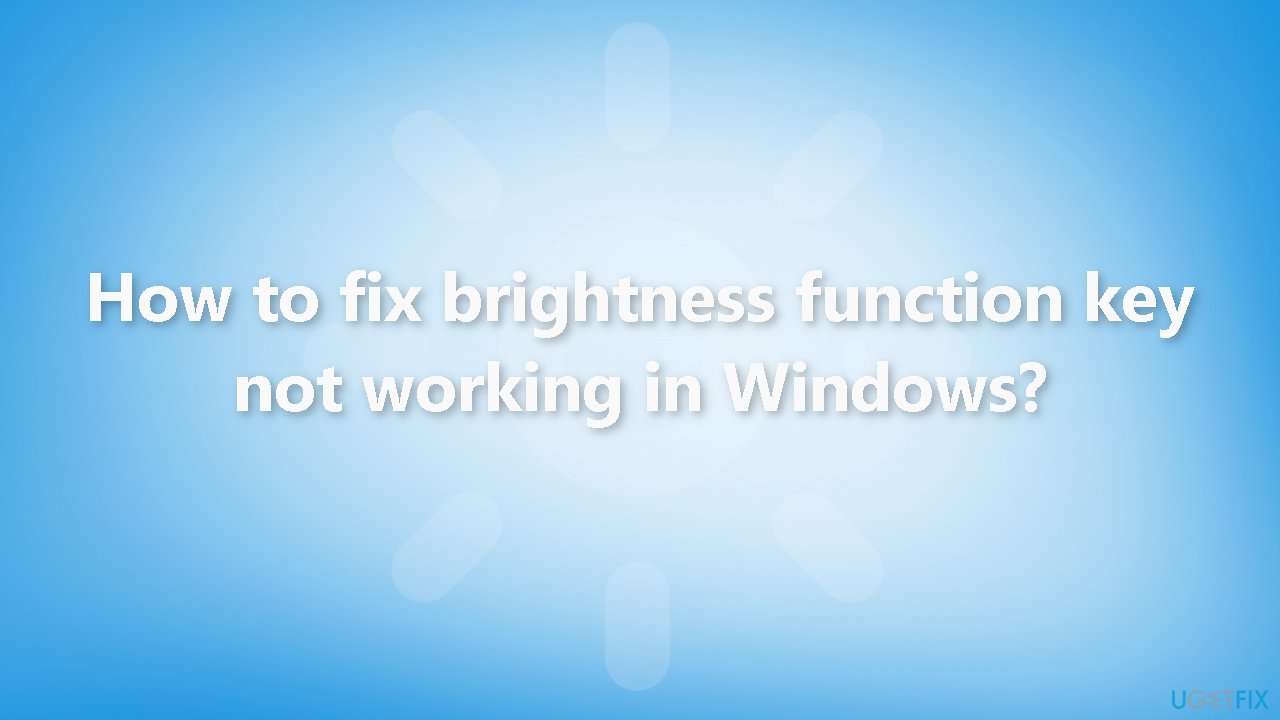
Method 1. Run the Hardware and Devices Troubleshooter
- Look for the Command Prompt in the Search menu
- Select Run as Administrator
- Copy and paste the command below and hit Enter:
msdt.exe -id DeviceDiagnostic
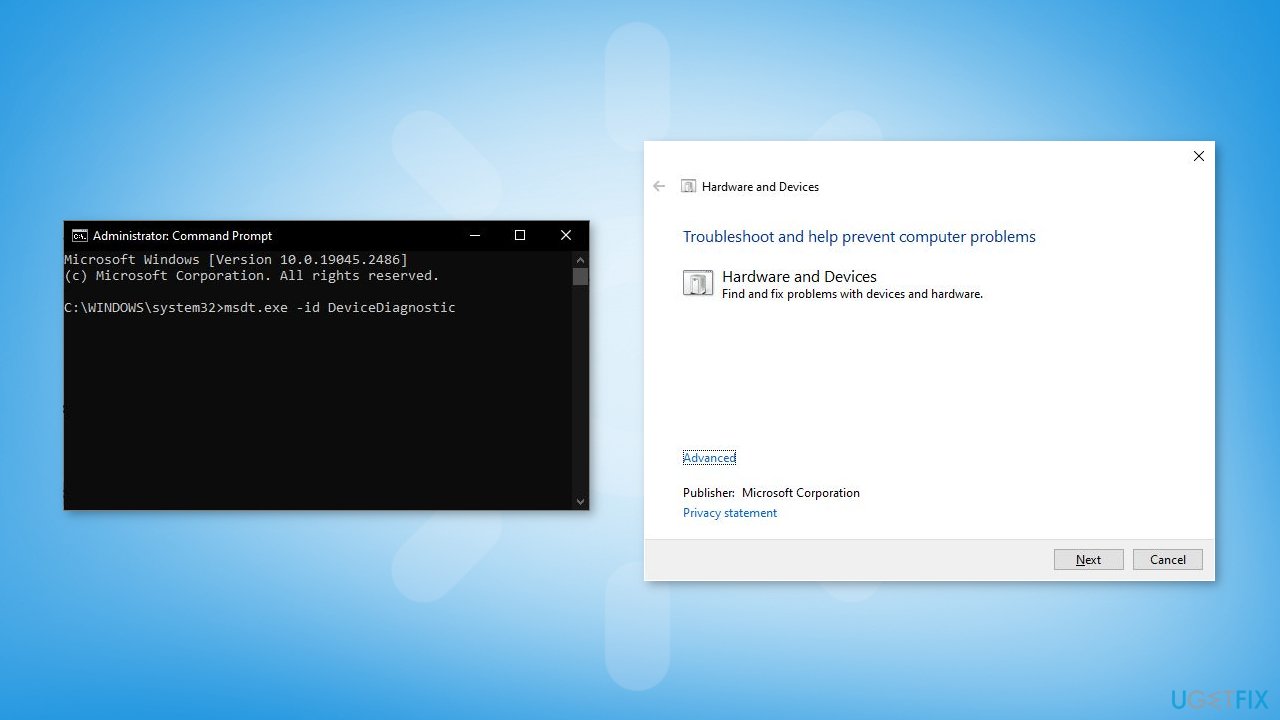
- Follow the on-screen instructions to run the troubleshooter
Method 2. Run the Keyboard Troubleshooter
Windows 11:
- Right-click on the Start menu in Windows 11
- Launch the Settings app
- Scroll down the right side of the Settings app
- Look for the Troubleshoot tab and click on it
- Click on Additional troubleshooters
- A list of all available troubleshooters in Windows 11 will be displayed
- Locate the Keyboard troubleshooter in the list
- To launch the Keyboard troubleshooter, click on the Run button next to Keyboard
Windows 10:
- Press the Windows key + I to open the Settings app
- Select Update and Security
- From the left panel, select Troubleshoot
- Click Additional troubleshooters
- Locate and run the Keyboard Troubleshooter
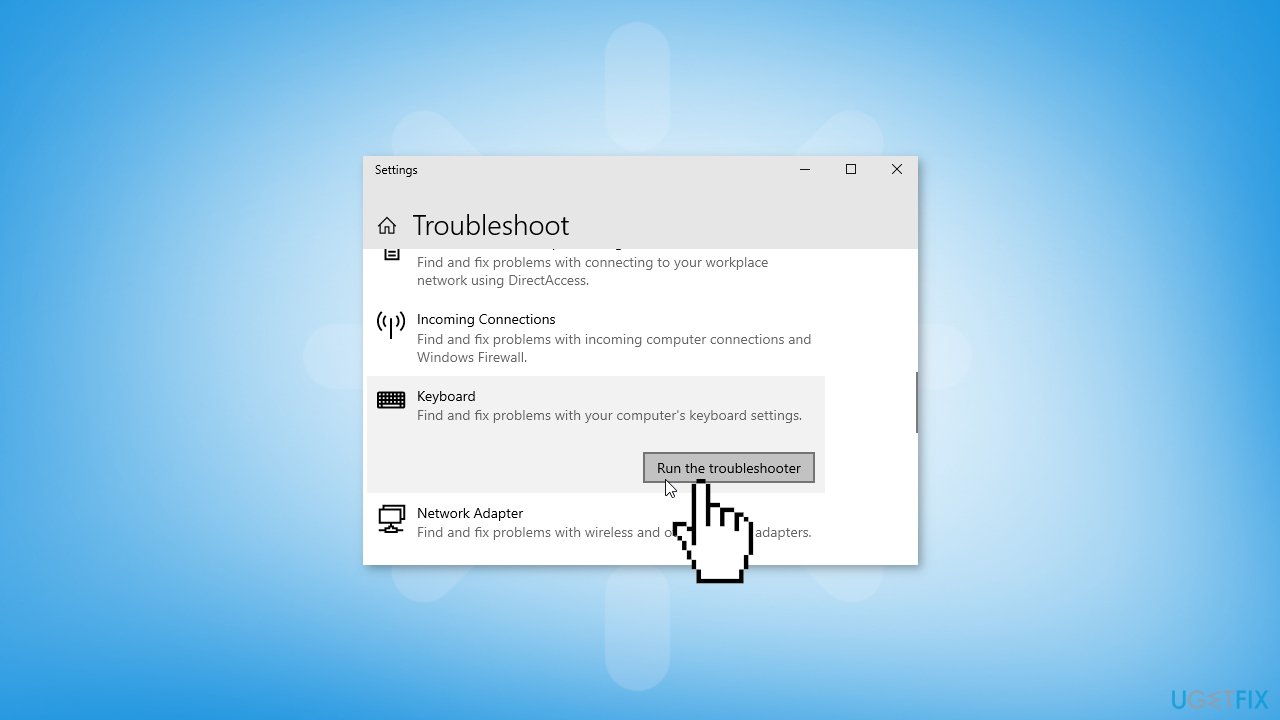
Method 3. Enable Generic PnP Monitor Driver
- Open the Device Manager
- Expand the Monitors branch
- Right-click on the driver
- If the driver is disabled, click Enable device
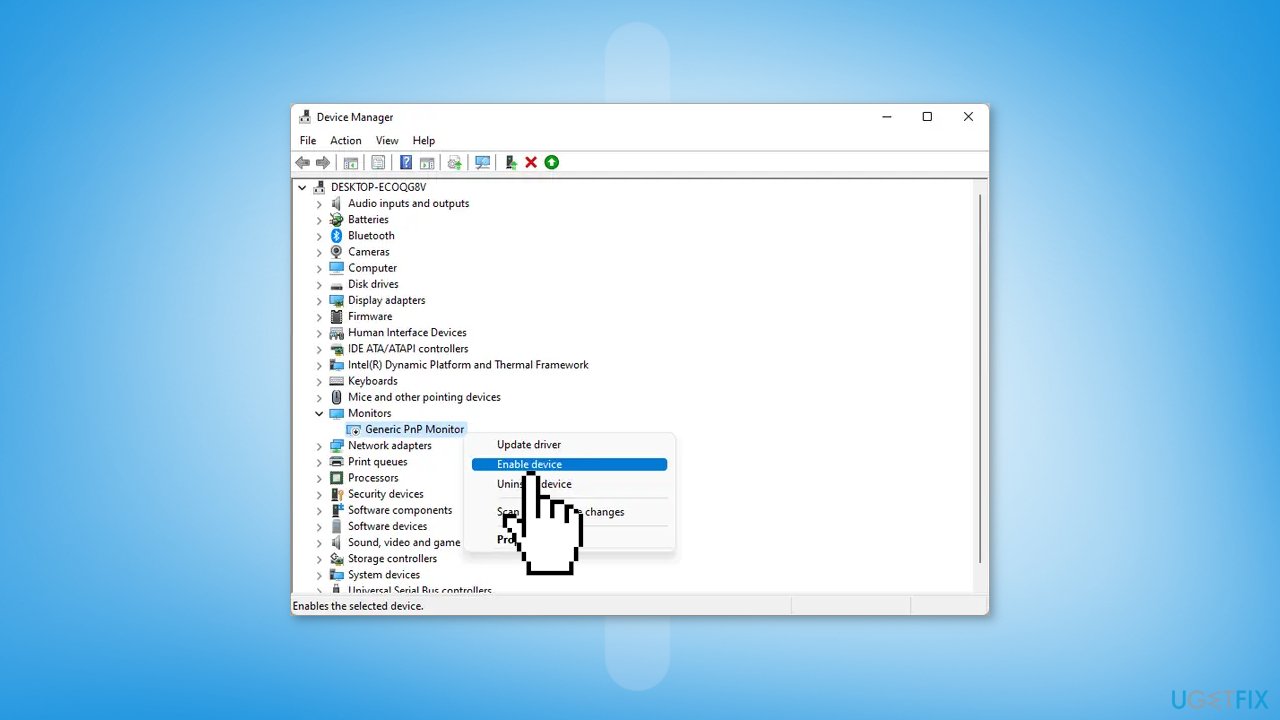
Method 4. Reinstall the Keyboard Driver
- Open the Device Manager
- Expand the Keyboards branch
- Right-click on the keyboard driver
- Select Uninstall device
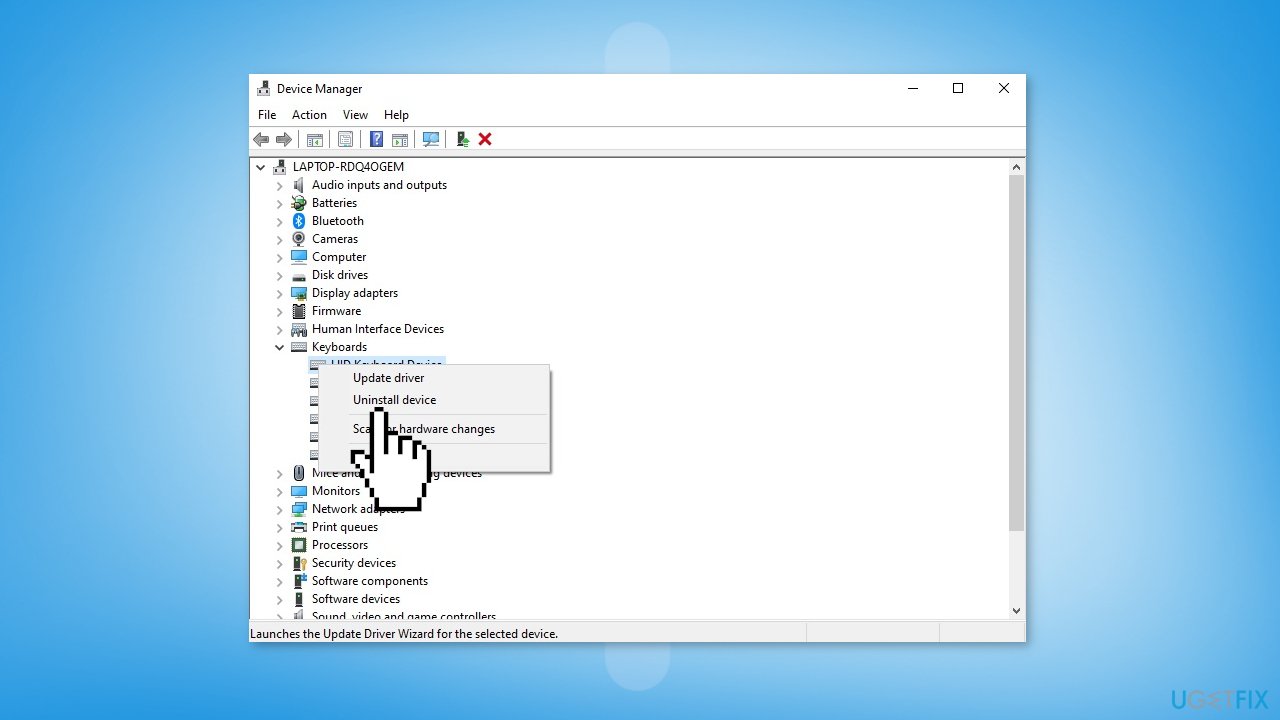
- Restart your computer
Method 5. Reinstall the Display Driver
- Open Device Manager and expand the Display Adapters tab
- Right-click on your graphics driver and select Properties
- Go to the Driver tab and click on Uninstall Device
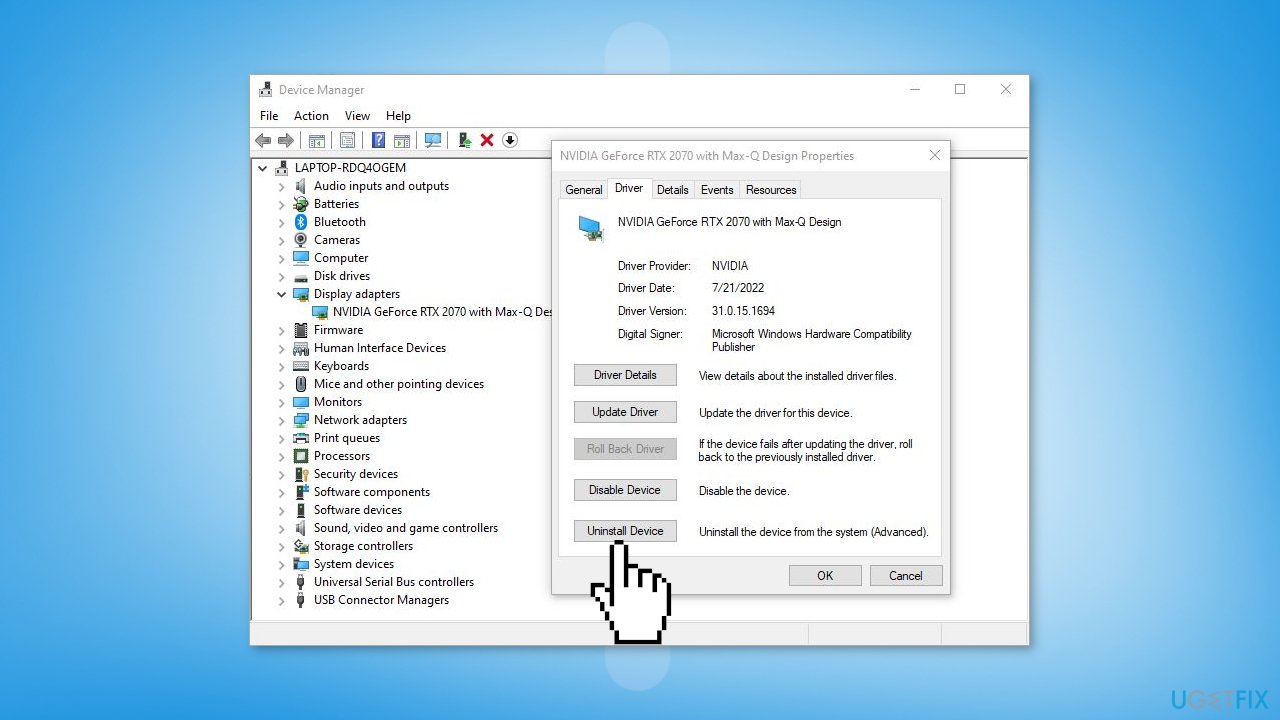
- Restart your PC
- Windows will install a basic driver upon reboot
- You may also use a dedicated utility like DriverFix that can find the best drivers for your machine and install them automatically, or install the driver manually from the manufacturer's website
Method 6. Install Microsoft Basic Display Adapter
- Open the Device Manager
- Expand the Display adapters section
- Right-click on the display driver and click Update driver
- Click Browse my computer for drivers
- Click Let me pick from a list of available drivers on my computer
- Select Microsoft Basic Display Adapter
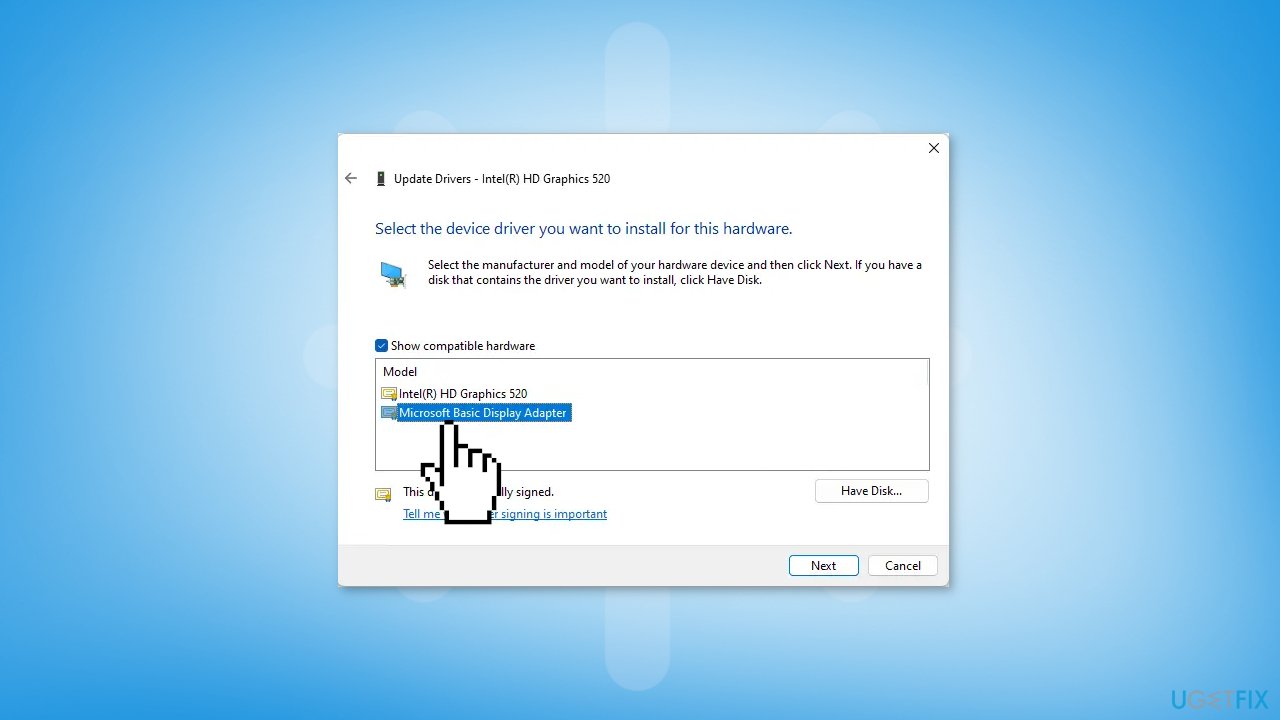
- Click Next and follow the on-screen instructions to install the driver
Method 7. Uninstall the last Windows Update
- Open Settings from the Start menu
- Click on Windows Update on the left side
- Click on Update History
- Scroll down to find Uninstall updates under Related settings
- Right-click on the update and select Uninstall
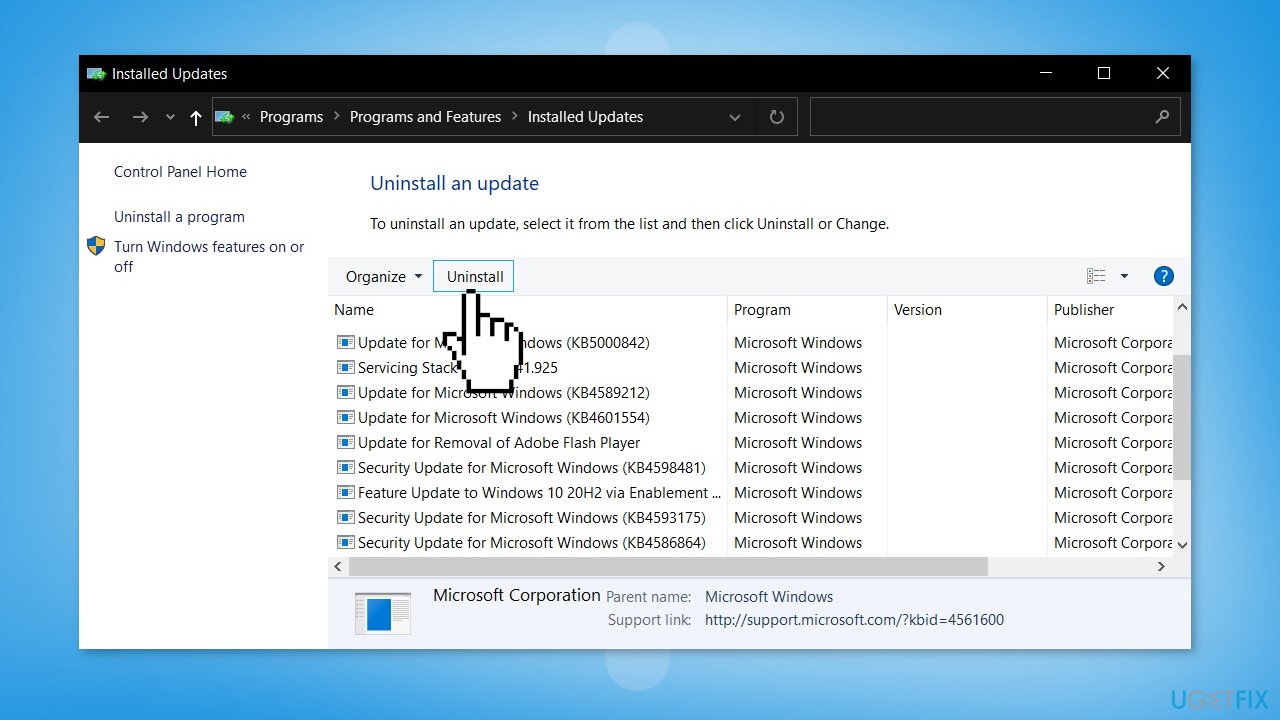
Method 8. Adjust Brightness without the Fn key
In Windows, there are multiple ways to adjust screen brightness. Alternatives to using the Fn key include using the Windows Settings app or Quick Settings menu or using the Windows Mobility Center. The Windows Mobility Center can be launched either from the Windows Search or from the Control Panel.
Using the Settings app:
- Open the Settings app
- Click on System
- Click on Display
- Adjust the Brightness slider to set the desired level of brightness
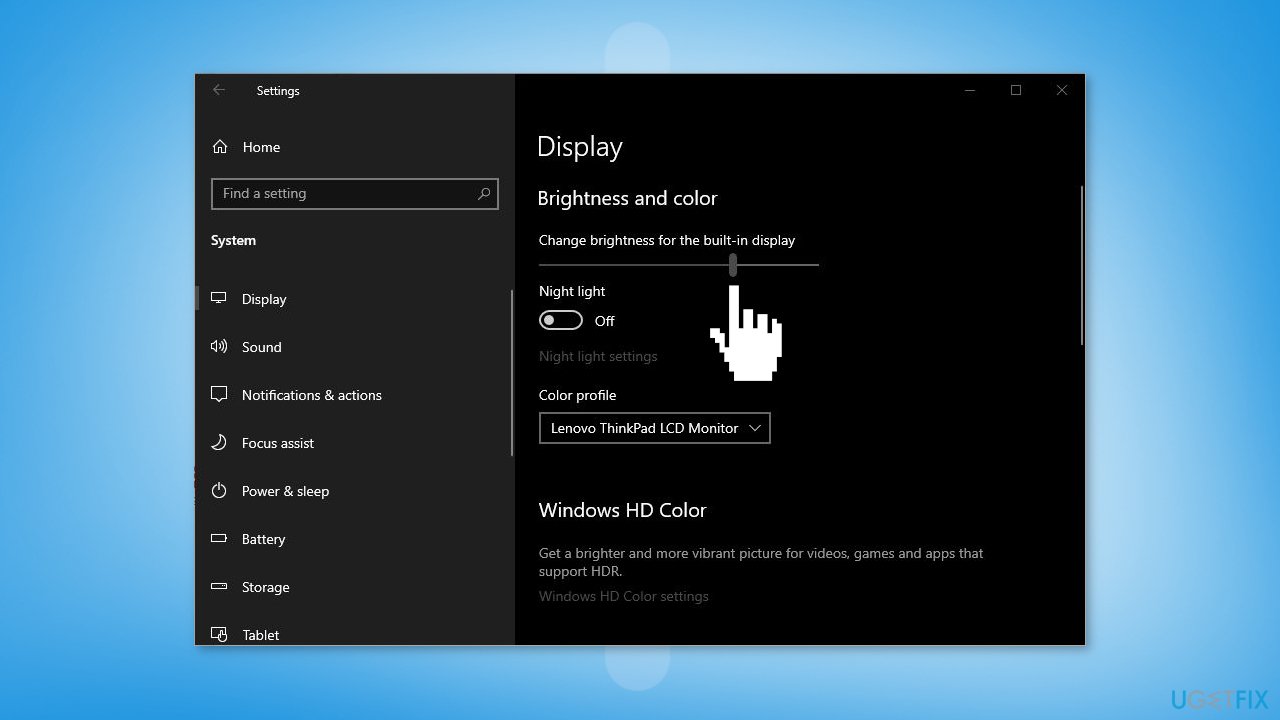
Using the Quick Settings menu:
- Click on the Notification icon in the system tray
- Find and click on the Brightness slider to set the desired level of brightness
Using Windows Mobility Center:
- Open the Windows Mobility Center by either searching for it in the Windows Search or through the Control Panel
- Adjust the brightness of the screen by using the Brightness slider in the Windows Mobility Center.
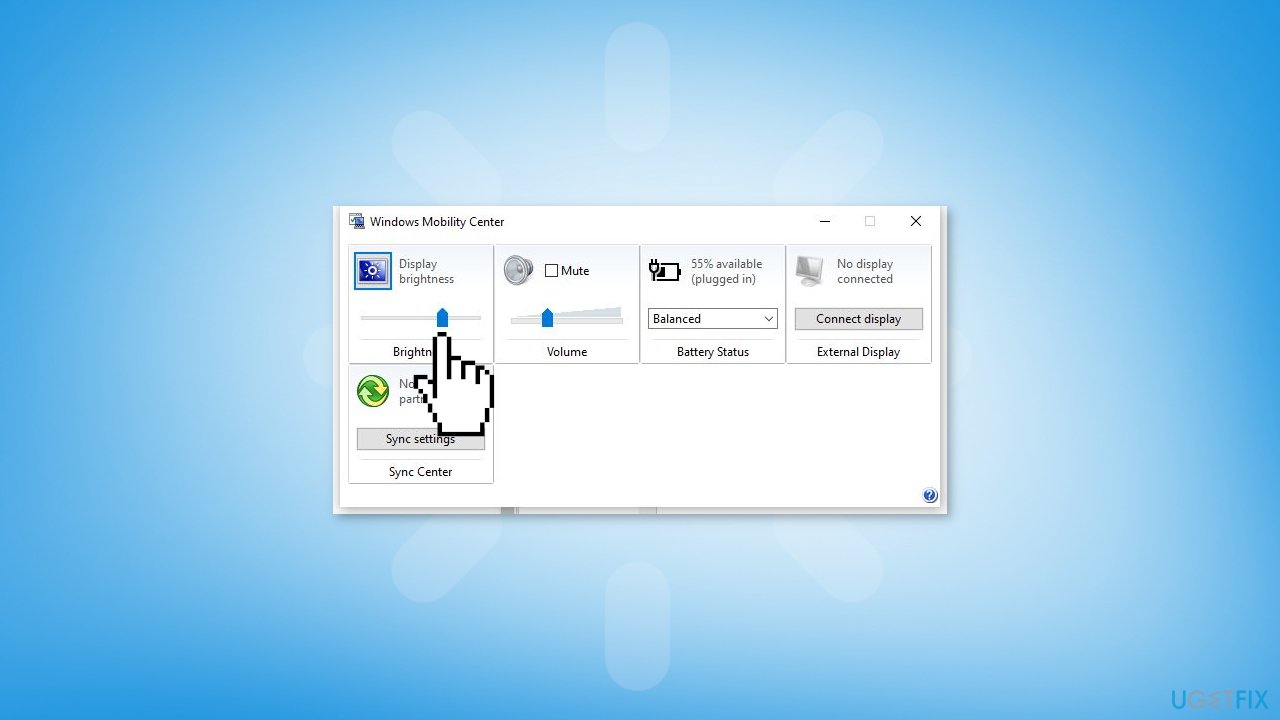
Repair your Errors automatically
ugetfix.com team is trying to do its best to help users find the best solutions for eliminating their errors. If you don't want to struggle with manual repair techniques, please use the automatic software. All recommended products have been tested and approved by our professionals. Tools that you can use to fix your error are listed bellow:
Protect your online privacy with a VPN client
A VPN is crucial when it comes to user privacy. Online trackers such as cookies can not only be used by social media platforms and other websites but also your Internet Service Provider and the government. Even if you apply the most secure settings via your web browser, you can still be tracked via apps that are connected to the internet. Besides, privacy-focused browsers like Tor is are not an optimal choice due to diminished connection speeds. The best solution for your ultimate privacy is Private Internet Access – be anonymous and secure online.
Data recovery tools can prevent permanent file loss
Data recovery software is one of the options that could help you recover your files. Once you delete a file, it does not vanish into thin air – it remains on your system as long as no new data is written on top of it. Data Recovery Pro is recovery software that searchers for working copies of deleted files within your hard drive. By using the tool, you can prevent loss of valuable documents, school work, personal pictures, and other crucial files.
- ^ Device driver. Wikipedia, the free encyclopedia.
- ^ Chris Hoffman. Everything You Need To Know About the Blue Screen of Death. Howtogeek. Tech Insight Magazine.
- ^ Tim Fisher. What Is the Windows Registry?. Lifewire. Software and Apps.



